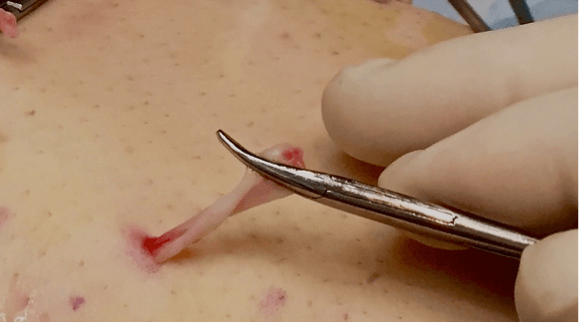Ambulatory Phlebectomy:
Ambulatory phlebectomy (also known as microphlebectomy, ambulatory phlebectomy, or stab avulsion) is a technique to remove unsightly varicose veins. In this procedure, several tiny incisions are made in the skin through which large varicose veins are teased out and removed. The cuts in the skin are so tiny that they must be closed with butterfly tape instead of stitches, which also leads to a nice cosmetic result. This will abolish the venous hypertension within the vein.
This procedure is typically performed in the office under local anesthesia with or without sedation. Phlebectomy might be done along with another treatment for varicose veins, including radiofrequency treatment, sclerotherapy or vein ablation. At Palisades Vein Center, we typically we recommend our patients to undergo vein ablation, or the closing of the veins, in conjunction with ambulatory phlebectomy to make the incision site nearly undetectable. We find that this combination produces very satisfactory results.

Phlebectomy Complications
Because Phlebectomy is a minisurgical treatment, it usually does not lead to any complications. Possible complications could include short-term skin color change, infection, pain, and tiny red spider veins. Patients should expect some soreness for a few days after the procedure, but generally there is no narcotic medicines needed for pain and patients can return to daily activities immediately after procedure. In some cases, we may recommend graded compression socks or bandages to be worn for a week after as a safeguard for post-operative care.
Phlebectomy can help improve the cosmetic appearance of skin after treatment, but this procedure is less likely to fix varicose veins when the leg veins are not working well. Because that is the case for most varicose veins, this procedure is usually used along with other treatments, such as radiofrequency vein ablation.

